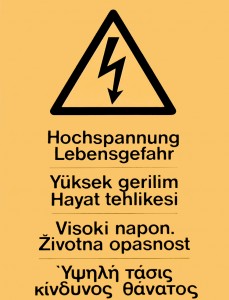 When I was young I remember standing in my grandpa’s workshop watching him build birdhouses. All the while, he would tell amazing stories from his life and experience. I hung on every word he said, and watched every movement of his hands and tools. His stories weren’t about wood, nails or screws. His stories were about life. But his project kept a 9-year-old engaged for hours.
When I was young I remember standing in my grandpa’s workshop watching him build birdhouses. All the while, he would tell amazing stories from his life and experience. I hung on every word he said, and watched every movement of his hands and tools. His stories weren’t about wood, nails or screws. His stories were about life. But his project kept a 9-year-old engaged for hours.
One of my favorite speakers, Sean Sweet, uses similar, carefully thought-out distractions to hold the attention of his young audiences. Constructing a box, painting a picture, or moving object after object from one place to another on stage, he holds the attention of preteens in a way I had never seen.
I met Sean two years ago when we began to hire speakers for our preteen retreats at SpringHill Camps. Prior to that, the primary teaching vehicle was drama debriefed in small groups. It was effective, but relied heavily on volunteer small group leaders to process and apply the message that had been presented through the skit.
But hiring speakers for that age group was new to me. There aren’t as many people like Sean speaking to fourth, fifth and sixth graders on a regular basis as there are speaking to middle- and high-school students. In fact, I wasn’t even sure what I was looking for.
A high school speaker seemed to be the most didactic, calmer, clearer, less bouncing around on stage to keep the attention of this mature age group. Speakers that address primarily middle-school crowds tended to use more stories, did a lot of waving about of their arms, and frequently said, “Shhh… look at me.”
Certainly, these are generalizations, but the logic in my mind said, if we’re going one step younger, we will have to go one step up on the energy level to hold their attention.
Boy was I wrong.
Do you remember that old leadership quote that says, “The enthusiasm of a group will never surpass the enthusiasm of the leader”? Well, here’s what I learned from working with great preteen ministry speakers: the energy and focus of the speaker defines the energy and focus of the hearer.
Some of our speakers are high energy on stage with preteens in the audience. The result: the kids are high energy in the audience. Speaker talks loud and fast, the kids talk loud and fast. The speaker is jumping around, the kids are having a hard time sitting still.
But others have taken a different approach. I’ve seen great communicators leaning in close to the audience, whispering to a room full of silent, fully-engaged 11-year-olds. They take cues from the energy of the speaker and reproduce them in their own behavior.
So here are three things to keep in mind when you’re addressing preteens, or a crowd of any age:
1. Behave on stage how you want them to behave in the audience. Looking for some good laughs? Raise your eyebrows, smile, and talk in a loud voice. If you’re funny, they will respond with smiles and laugh. Looking to drive home a point? Stop and listen to your audience for a moment—this feels a lot like silence—then lean in and make your point in a calm, direct voice.
2. Model from stage what you want them to model in their lives. Depending on the circumstances, it may be that few or none of your audience have brought a Bible with them. Don’t allow that to drive you to only read scripture from screens or notes. Open your Bible and read the text from the Text—even if they follow along on the screen now. You are teaching by your method.
In the same way, you might be pretty sure that few members of your audience have memorized scripture. Take the opportunity, then, to share some brief, memorable scriptures from memory, rather than from notes or by reading. Resist the urge to quote long, confusing passages, this will only discourage them. Instead, your model of scripture memorization may inspire them to try it themselves.
3. Never say shhh… Have you ever done it, or seen it? The speaker says shhh… and two-thirds of the audience says shhh… back. It’s no quieter than with everyone talking. Instead, plan for these moments, and engage them. Have a relevant illustration or object lesson in your back pocket. Be willing to go there if you need to reengage your audience.
Better yet, think through the flow and energy of your teaching in advance, so as to avoid these moments. Give your audience periodic opportunities to release their wiggles and need to talk at appropriate times. Then capture them quickly and move on.
This is part three in a series. Also check out Five things you should never say when you’re preaching or teaching and how to tell a compelling story.